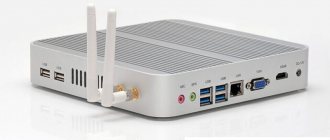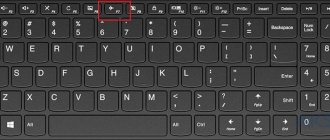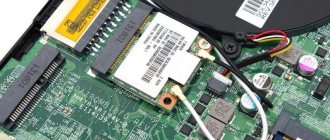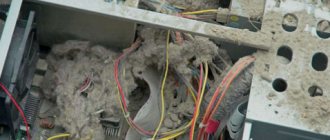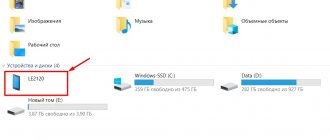It is quite difficult to imagine, especially for today’s younger generation, what life would be like in the 21st century without the Internet and all the technologies and opportunities derived from it.
There are many different theories that try to shed light on a possible low-tech future, and they are all quite scary. These theories can be treated differently, some regard it with a great deal of humor, while others take everything at face value.
But in any case, it would be a mistake to deny that the life of a modern person, including his work activity, is entirely tied to the Internet, and the occurrence of problems with access to the World Wide Web is regarded as a personal disaster, which, in fact, in some way is.
In the framework of this article, one of these global problems will be analyzed, which is characterized by spontaneous disconnection of the Internet connection on the computer.
Who is to blame for this? What are the reasons, and most importantly, how to solve this problem? The answers to these and other questions will be given below.
Checking for hardware error
Surely, many already understood from the name that the word “hardware” implies the presence of physical problems with the equipment. This means that, first of all, it is necessary to exclude possible culprits when clarifying the cause-and-effect relationship mentioned above.
The order in which the recommendations are applied in each specific case may vary, the main thing is to adhere to the basic structure and check all possible options:
- The first action is extremely logical, but at the same time not entirely related to hardware - this is to reboot the router. Yes, a reboot in most cases allows you to return the connection, but it does not correct the very cause of the break, which must be taken into account.
- Check the tightness of the cable connection on your router. All connectors must be physically intact, contacts and plugs must not contain chips, there should be no plaque or corrosion of metal elements or other unauthorized changes to the original appearance.
- Check that the power supply/adapter is working properly. If you have the appropriate tools (such as a multimeter), make sure that the power adapter performs within the specifications stated on the label.
- Check the condition of the cables/wires laid throughout the premises (residential or non-residential) and connected to the router and computer. Make sure that the provider's cable is intact and intact, that it is not twisted, that the insulation is not broken, and that the cable installation location does not intersect with sources of possible electromagnetic interference.
The presence of hardware problems can only be confirmed or refuted by physical testing using all possible and available methods.
If you have not recorded anything presented above, then you should go directly to the equipment and network settings.
Solution options
It is worth noting that the connection may be lost not only when using wireless data transfer technology (WiFi), but also when using a wired connection.
This circumstance significantly complicates the definition of the issue, therefore, for greater clarity, the main reasons (which will be discussed below) should be given in the form of a table:
As can be seen from the table above, in order to solve the issue under consideration, quite significant work is required. And this is exactly what should be done next. First things first:
Incorrect driver software is being used
Both WiFi and wired Internet require driver software for the network adapter. As has already been said everywhere and repeatedly, drivers in the Windows operating system are, in fact, one of the most defenseless components that are constantly subject to “external and internal attacks.” To test this theory, you will need to roll back the driver to a previous version or remove it, followed by an update:
- Right-click on the “This PC” (My Computer) icon and select “Manage”;
- In the “Utilities” directory, open “Device Manager”;
- In the list of components that opens, find and expand the “Network adapters” section;
- Depending on which connection you are using, open the required adapter, for example, the demonstration uses a wired connection with the “Qualcomm Atheros AR8152 PCI-E Fast Ethernet Controller (NDIS 6.30)” adapter;
- Right-click on the selected option and open its “Properties”;
- Go to the “Driver” tab and pay attention to the version of this driver indicated there and compare it with the version that is offered directly by the developer. You can view the current version and download it from the manufacturer of your network card, or the manufacturer of your laptop. As an alternative, you can use specialized software such as DriverPackSolutions.
Please note that in the same tab there is a “Rollback driver version” functionality if the problems with the connection that are being fixed and under consideration manifest themselves after updating the previously used version. As another alternative, you can try to remove the device (by clicking on the corresponding button), restart the computer and allow the operating system to install the driver it needs on its own. To be on the safe side, you should first download everything you need, including the mentioned drivers, or keep on hand another device with an active Internet connection.
3. Modem
A cheap modem may periodically turn off due to overheating. This and other failures can be resolved by replacing the modem. Periodic disconnection of the Internet during a modem connection may cause the device to fail due to a loose USB port. You just need to insert the modem into another port.
A modem is a computer peripheral device, and for it to work you need a correctly working driver. We will consider this issue below; the principle of correct operation of drivers is universal for all network devices on a computer.
The network cannot cope with excessive load
Let’s assume the following picture/map of Internet needs in a typical average house/apartment:
- They play an online game on one computer;
- They are watching a program on SmartTV;
- On one smartphone they surf the web, on the second they watch content on a well-known video hosting;
- Traffic distribution is handled by an old router, purchased for several thousand rubles about 5 years ago, and up to a certain point it copes with the load;
- The user on the computer minimizes the game and turns on the torrent for downloading;
- The Internet cuts out and returns only after a reboot.
The above situation is familiar to many, and the conclusion from it suggests itself - the router simply cannot cope with the modern “appetites” of its users. In fact, there are only three possible ways out of this situation:
The first and third options only assume the existence of agreements and/or the possibility of purchasing new equipment. The second option can be implemented as follows: (using the example of TP-LinkTL-WR940N):
- For subsequent work, it is necessary to determine the mac addresses (physical address) of devices that are planned to be used on the home network (taking the above example as a basis). To do this, you will need to open the hardware settings and look at the “Information” section. This can be done in the settings of your smartphone or in the settings of your TV. In order to view this information about the computer, just open the command line and execute the command “ipconfig /all”, where the response will provide detailed information, including the required mac address in the “Physical address” line.
- Open the router’s web interface by entering the address 192.168.1.1 (or 192.168.0.1) into the browser’s address bar;
- Enter your login and password to confirm the legality of the requested access; Please note that if you still use the default login/password as admin/admin, then the first thing you need to do is change them to your own options. To do this, go to the “System Tools” - “Password” section.
- Open the “DHCP” section and check that the “DHCP server” is enabled and a range of assigned addresses has been assigned for all devices connected to the network;
- Go to the “Address Reservation” subsection and click on the “Add” button;
- In the “Mac address” line, enter the physical address of the device, for example, a computer, and in the “Ip address” line, enter the corresponding value from the range mentioned above. Repeat the manipulations for all the necessary gadgets.
- Next, open the “Bandwidth Control” section and check the “Enable Bandwidth Control” box;
- In the “Line Type” line, specify “Other” (if such a parameter exists), configure the value of the outgoing and incoming bandwidth taking into account individual parameters;
- Open the “List of Rules” subsection and click on the “Add” button;
- In the “IP address range” line, indicate the assigned IP address, and below set the desired speed indicators that will be allocated to a specific device, for example, a computer. In the example, 1Mbit/s was set for upload and 1Mbit/s for download. Similar steps should be repeated for all devices. From the moment the settings are saved, the computer and other devices will be provided with exactly as much traffic as you authorized and no more, which will allow you to adjust the router’s load based on its actual capabilities.
Why the Internet is interrupted: the problem is in the router
Most often, owners of outdated routers face the problem of a sudden Internet shutdown. Routers in the budget price segment also let users down. Failures occur at times of increased load. When several users from different devices access the network. Watching movies online, listening to music and downloading heavy files can knock out the router.
Typically, such problems are resolved by rebooting the router. If connection breaks are directly related to intense loads, you need to think about replacing network equipment. If you don’t want to buy a new router, disable torrent clients and reduce the load on the device. Experts also recommend periodically updating the firmware.
Firmware becomes outdated over time. You can find resources on the Internet that describe step-by-step procedures for flashing routers.
Sometimes resetting the settings to factory settings helps solve the problem of frequent interruptions. There is a special button on the body of each model. More often, manufacturers make it recessed into the body so that users do not accidentally press it. You need to take a thin, sharp object and hold the button for ten seconds. When the indicator lights flash, the reset has been completed successfully.
If the signal periodically disappears, you need to re-enter the settings. You can do this yourself. Check the functionality of the router as follows. Connect the network cable directly to the computer. If you can access the network, then the problem is in the router. In this case, there will be no Wi-Fi network on either phones or tablets.
Suboptimal wireless network settings are being used
It is worth understanding that the quality of a wireless network is influenced by many factors, for example, a router is used in an apartment building, where the “neighboring” equipment operates in the same modes and with the same channels. This circumstance can most directly affect both the speed of the network and the stability of the connection, and can also lead to the problem under consideration.
Therefore, you should experiment with your wireless network settings:
- Open the router’s web interface again and go to the “Wireless Settings” section;
- “Channels” - in the Russian segment, 13 channels are used, and the most popular are 6 to 11. In this case, you can use the brute force method and check all available options except 13, since this channel is not supported by all devices.
Pay attention to two parameters: “Mode” - from all the options, select the one that can cover the maximum number of standards, for example, “11bgn mixed”;
To check channel occupancy, you can also use third-party software, for example, “inSSIDer”.
Additional Tips
In addition, I would advise doing a system rollback, as strange as it may seem, but this method helps in many problems. To do this, also click “Start” and enter “System Restore” in the search.
After this, the service will open, click “Next”, select a restore point. At the very end, you will need to wait until the system completes the procedure and restarts the computer. Try to choose the earliest possible recovery point. It is better to save those files that are stored on the desktop to another drive.
Another thing that can help is updating drivers on network equipment. I wrote about this in this article. After this, the problem should be resolved.
Computer power settings are being interfered with
This option is quite common among users using laptops/netbooks, where it is possible to disable the wireless adapter to save battery power.
To set the power consumption mode, do the following:
- Press the key combination “WIN+R” and execute the command “control powercfg.cpl”;
- On the power supply scheme you are using, select the settings section;
- Expand the branch “Wireless network adapter settings” - “Power saving mode” and for each option (on network and on battery) set the value to “Maximum performance”;
- Click "OK";
- Press “WIN+R” again and execute the command “mmc devmgmt.msc” or open “Device Manager” in the usual way;
- Open the properties of the wireless network adapter and go to the “Power Management” tab;
- Uncheck "Allow the computer to turn off this device to save power" and click OK.
In the window that opens, click on the line “Change advanced power settings”;
Incorrect network settings are being used
Incorrect computer network settings usually lead to a complete loss of access to the Internet, but in theory, under certain circumstances, they can lead to the interruptions in question.
- Right-click on the network connection icon in the tray and select “Diagnose problems” or “Troubleshoot”;
- Open “Network and Sharing Center” - “Change adapter settings”;
- Right-click on the connection you are using and open its “Properties”;
- Among the marked components, find the line “IP version 4 (TCP/IP)” and click “Properties”;
- In all the tabs there, check to see if there is anything extraneous or unauthorized by you. As a test, take screenshots of all windows, and simply switch all the parameters entered manually to automatic mode and test the quality of the connection.
Depending on the results of the diagnostic utility, you should take the actions it recommends;
It would also be a good idea to check the operating system for virus activity with anti-virus software and scan the system with the “sfc/scannow” scanner. There will be no harm, but there is benefit.
“Ambulance” when the Internet disappears for a few seconds
- Checking indicators. When the working router is turned off, the lights go out; there should be no freezing or intermittent blinking.
- Manual reboot. It is enough to turn off and then turn on the device to resume Internet distribution. But if the operation has to be repeated more and more often, this is a bad sign, especially when the device is less than 5 years old.
- Diagnosing your computer for viruses.
Spontaneous rebooting of the router indicates a power outage or a broken outlet. Also, the reason may be hidden in defective electrolytic capacitors, which swell and fail over time. You can check their condition by opening the top cover of the router. If none of the tips help, contact your provider's support service to check the integrity of your DSL connection.
The connection is blocked by the antivirus
In most cases, this happens as a result of standard protection measures - a firewall. Therefore, to confirm/refute this, you should temporarily disable it:
- Disable all screens of installed antivirus software;
- From the available options, select “Windows Defender Firewall”;
- Next, open “Turn Windows Defender Firewall on or off”;
- In the window that opens, select “Turn off Windows Defender Firewall” for both the private network and the public network.
Open “Control Panel” and go to the “System and Security” section;
Check if the interruptions are repeated or if the Internet is working stably. If the first option is enabled, enable the antivirus, and if necessary, enable the firewall.
Conclusion
If none of the above has saved your Internet connection from interruptions, then it’s time to contact your provider to carry out diagnostic work on your network. In addition, perhaps the reason for all this is even more prosaic - technical work is carried out on the provider’s side.
It is also necessary to understand that the recommendations given are general and may not help in some cases with some individual characteristics. For example, situations have been recorded more than once when a user did not change the standard authorization data for logging into the router’s web interface, and mistakenly created an open wireless access point. The “joking neighbor” took advantage of this, wanting to make fun of his “friend”, he simply turned on/off his “Internet” at will. In this matter, everything is possible, and even unthinkable reasons should not be excluded.
